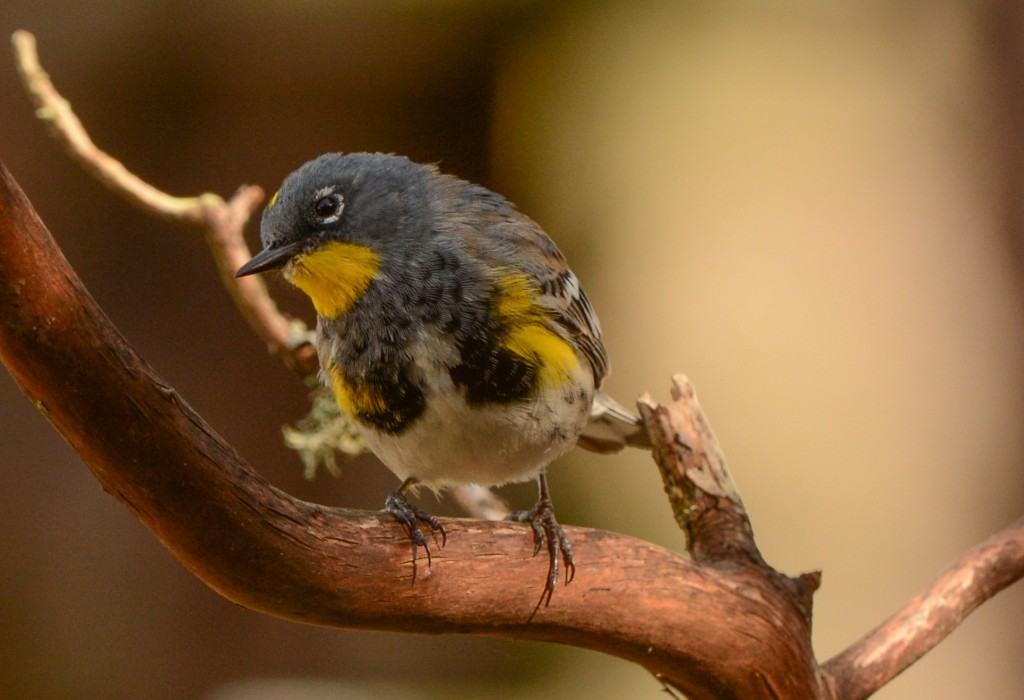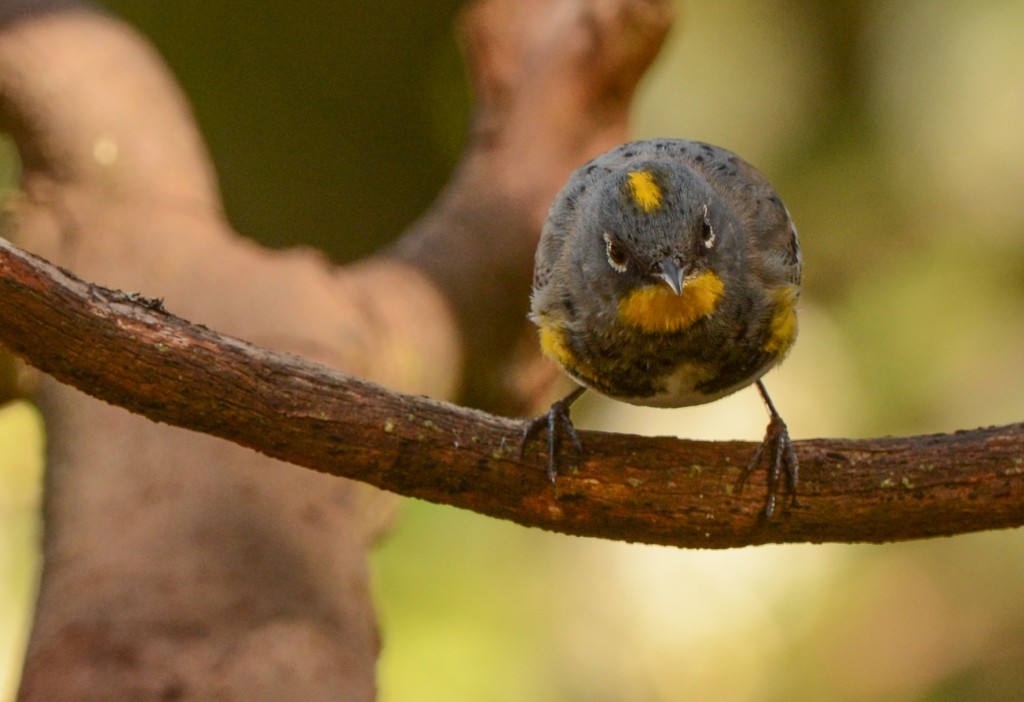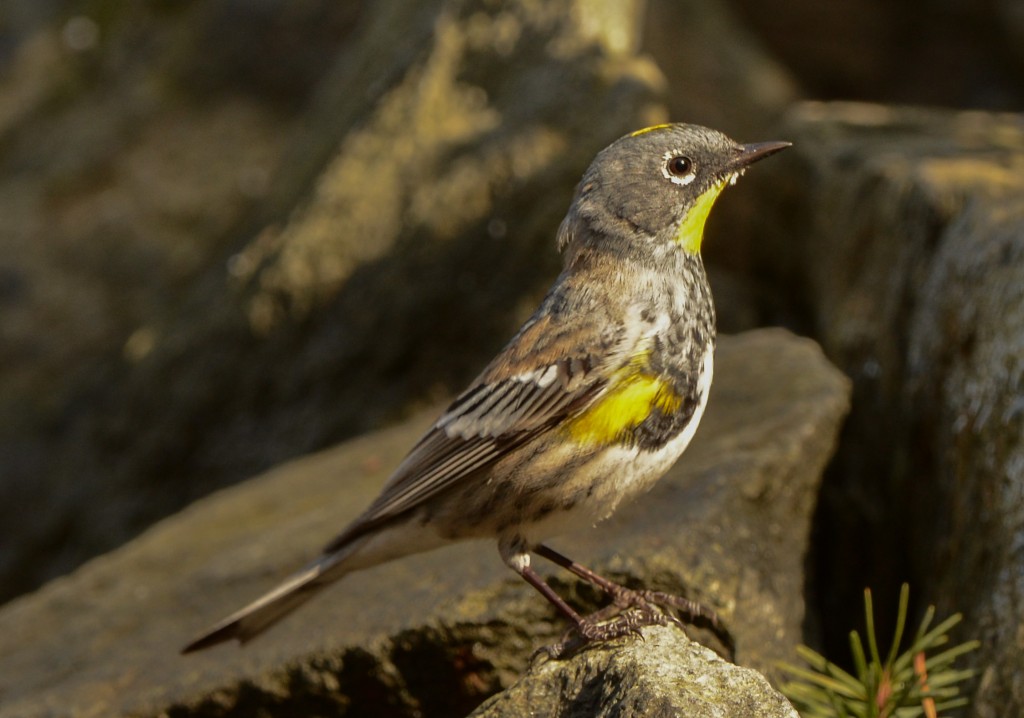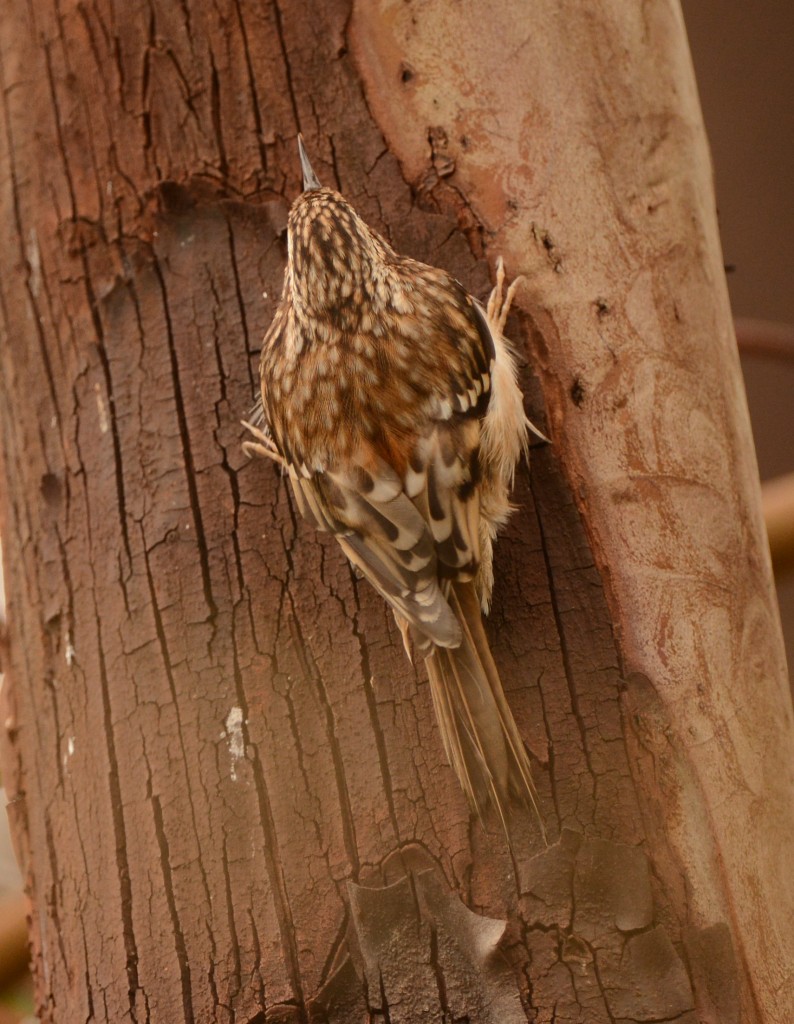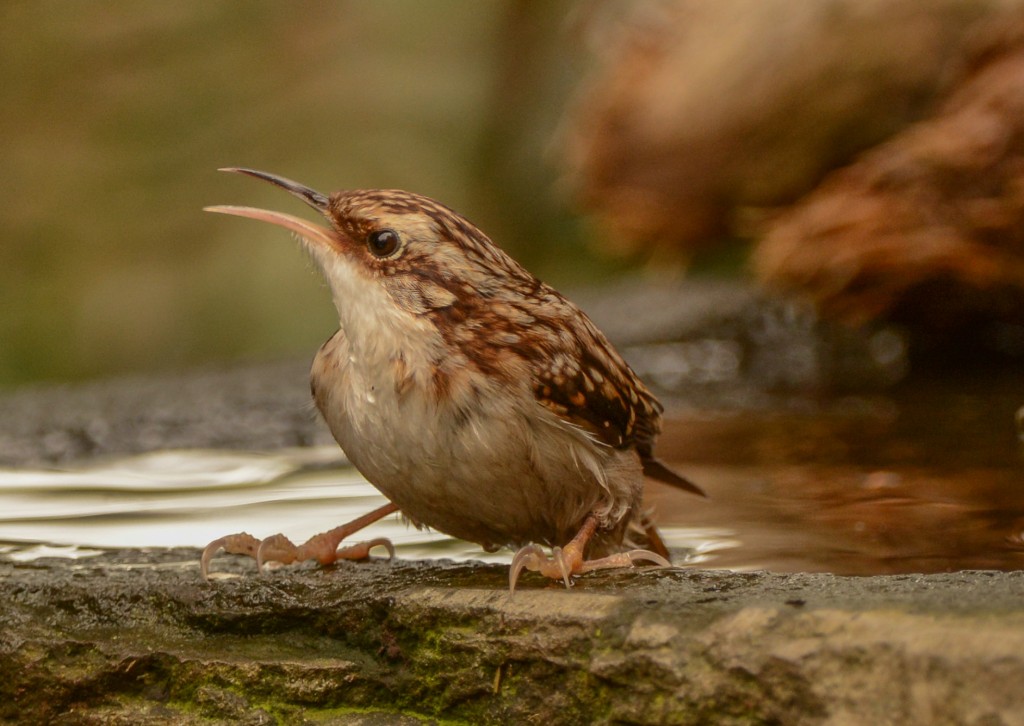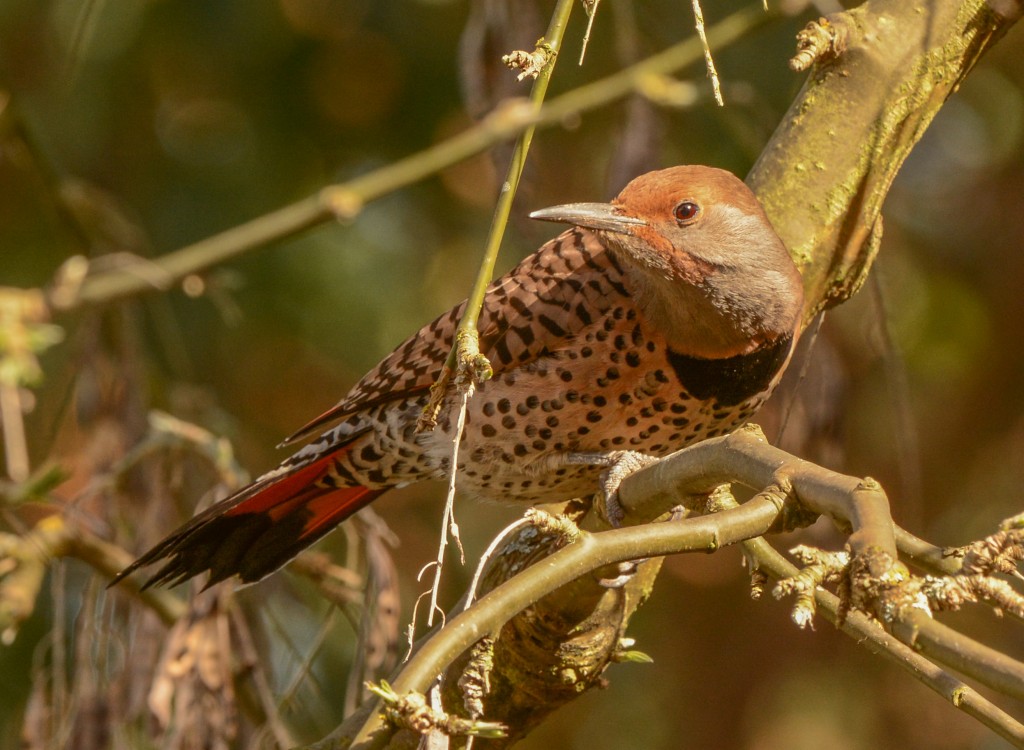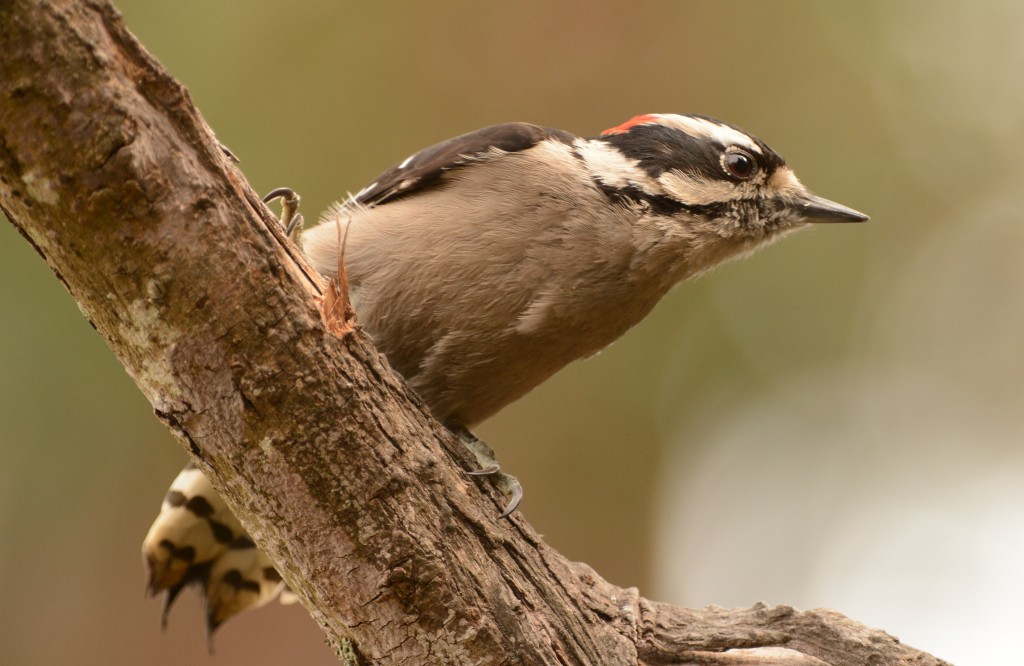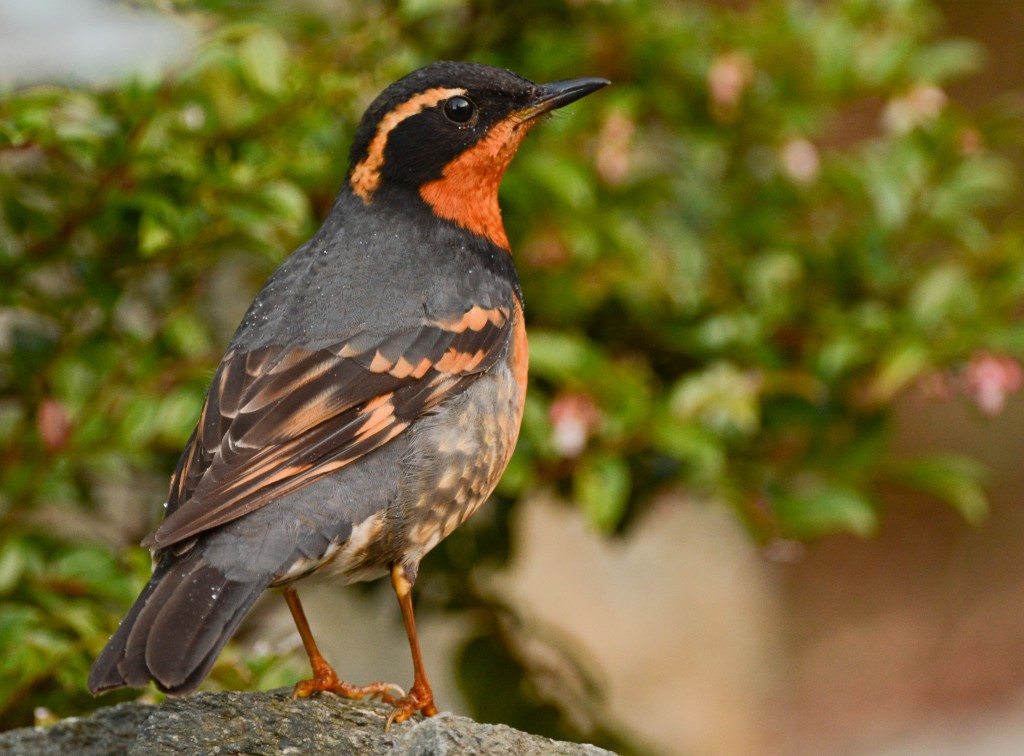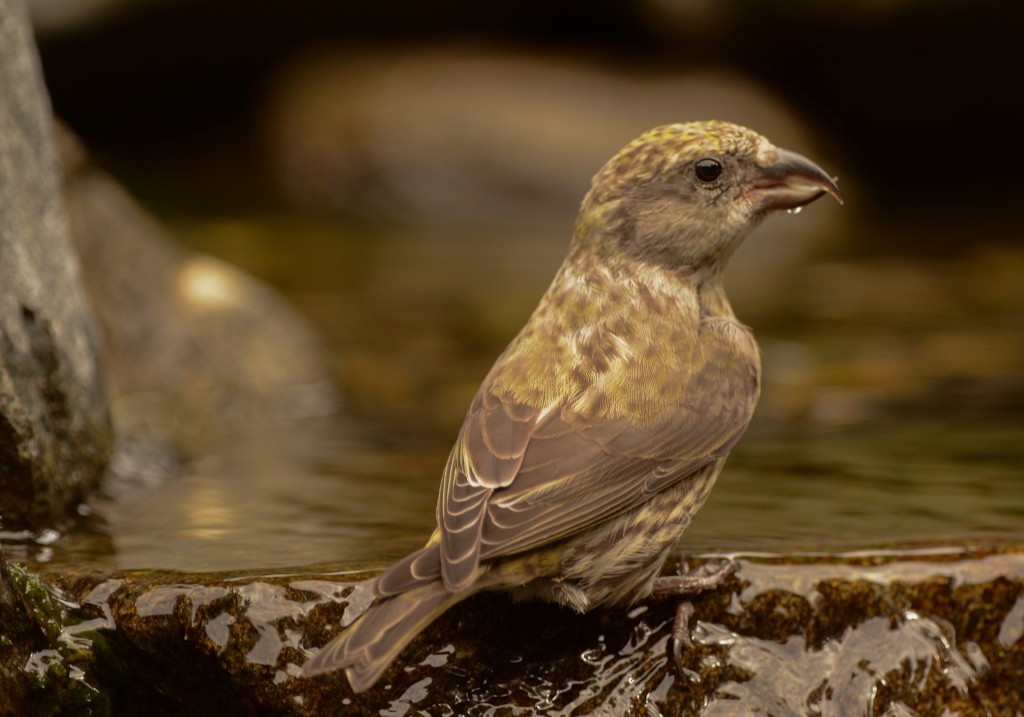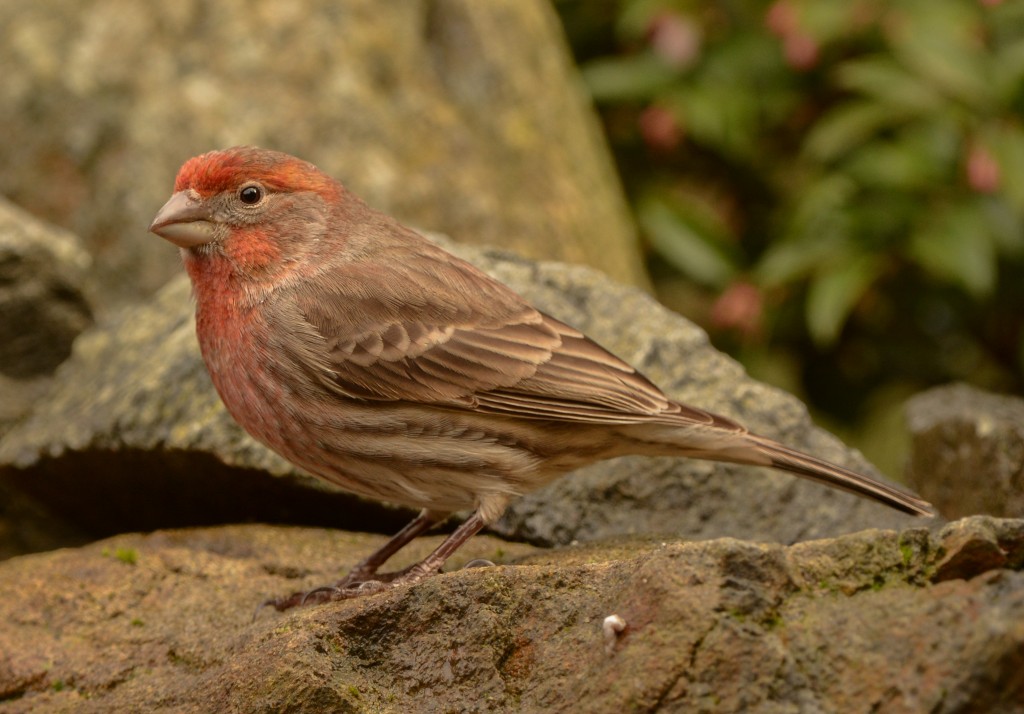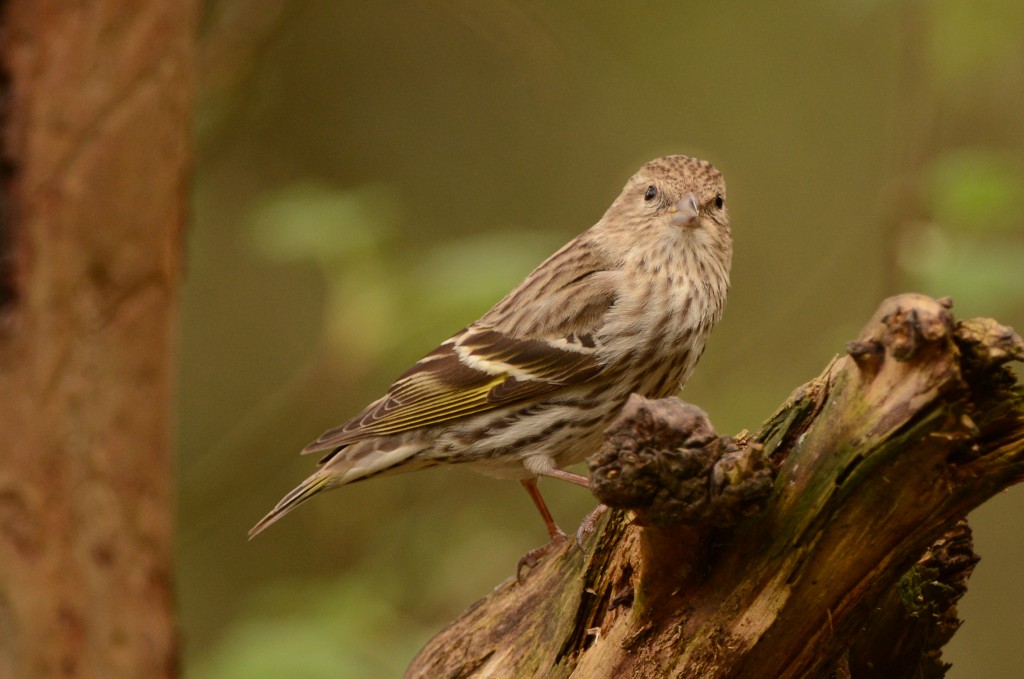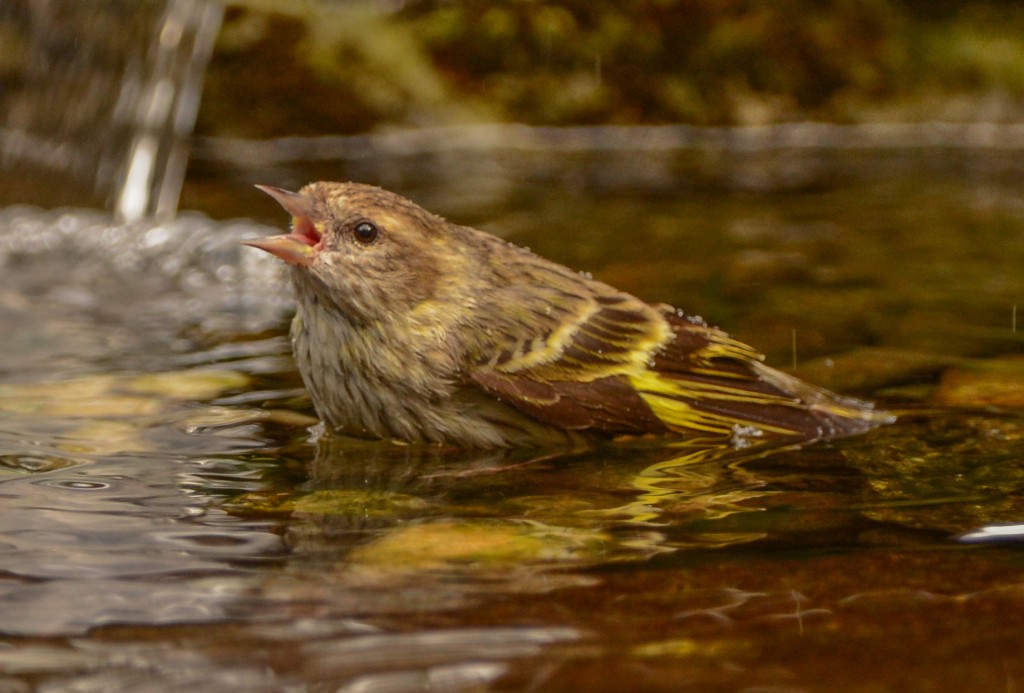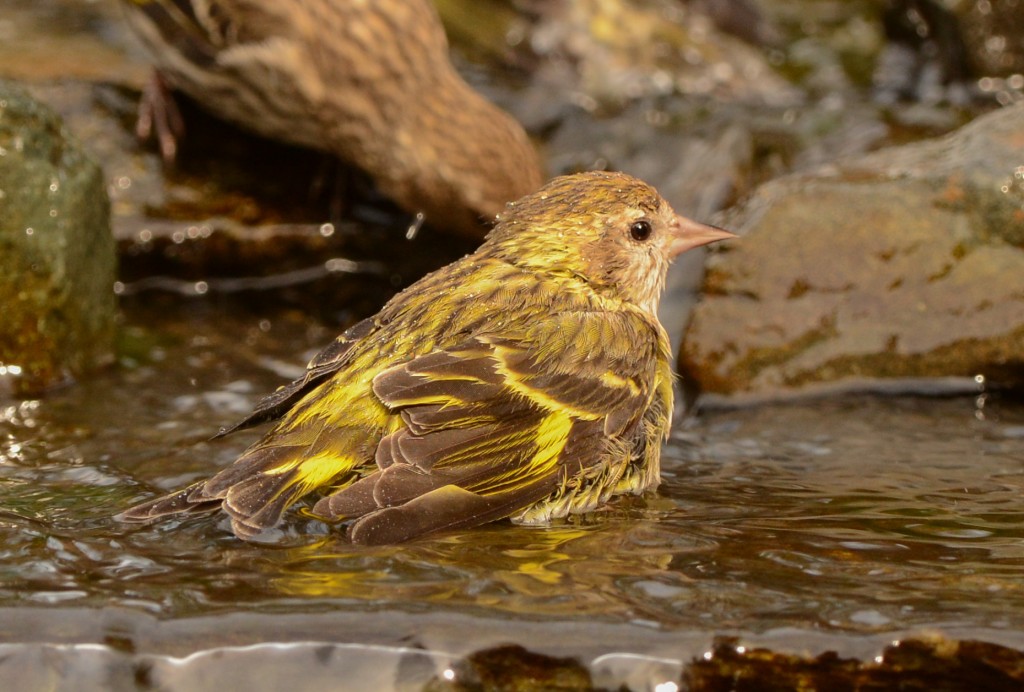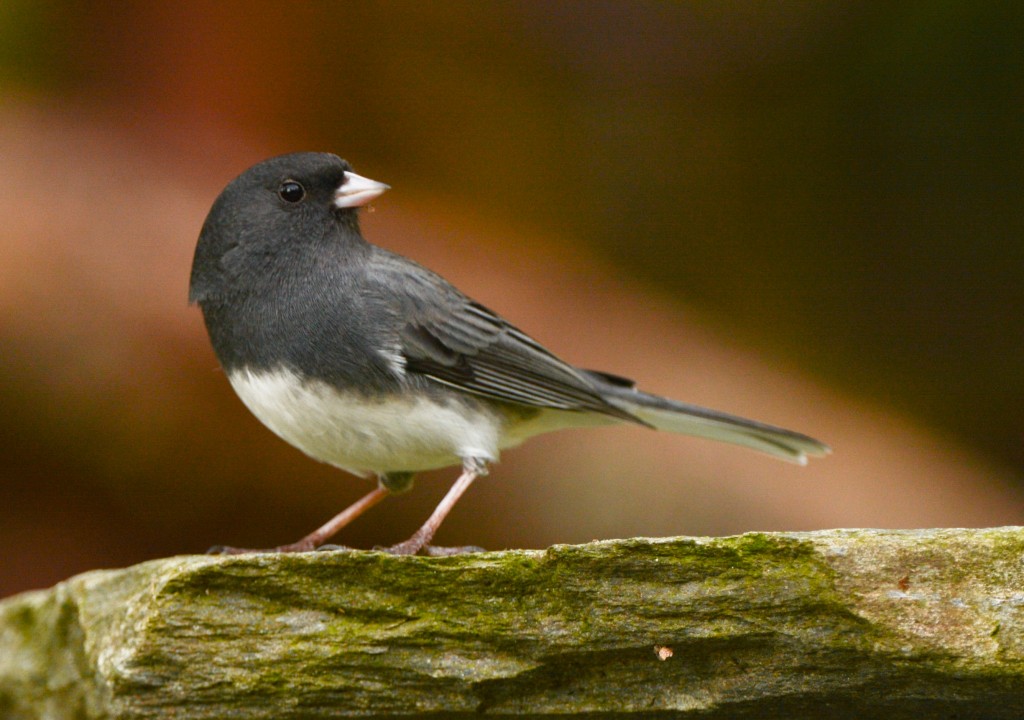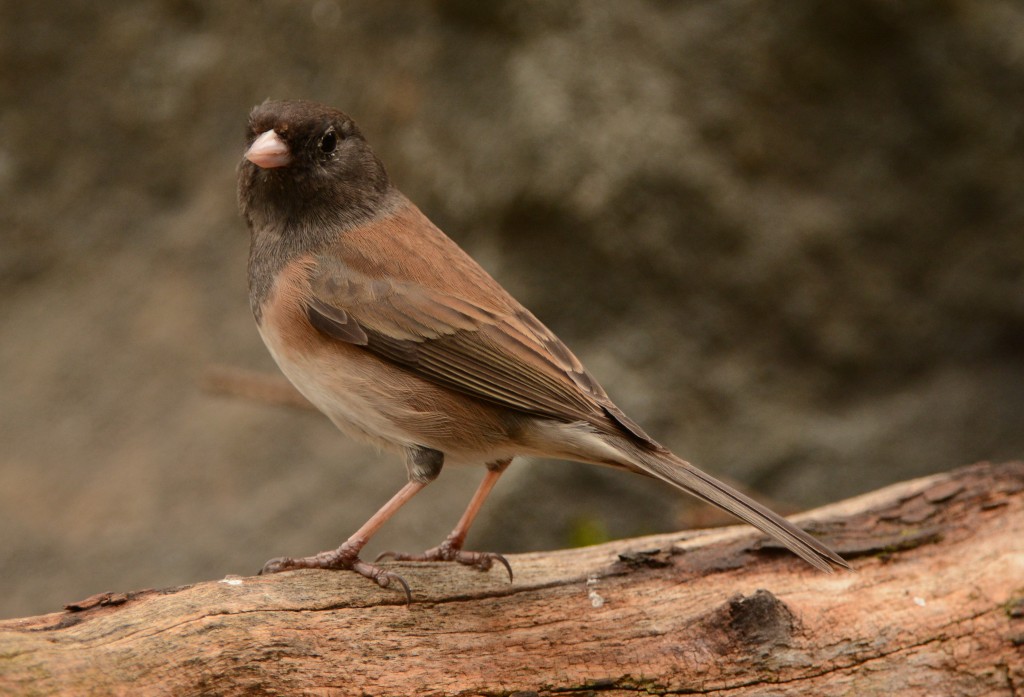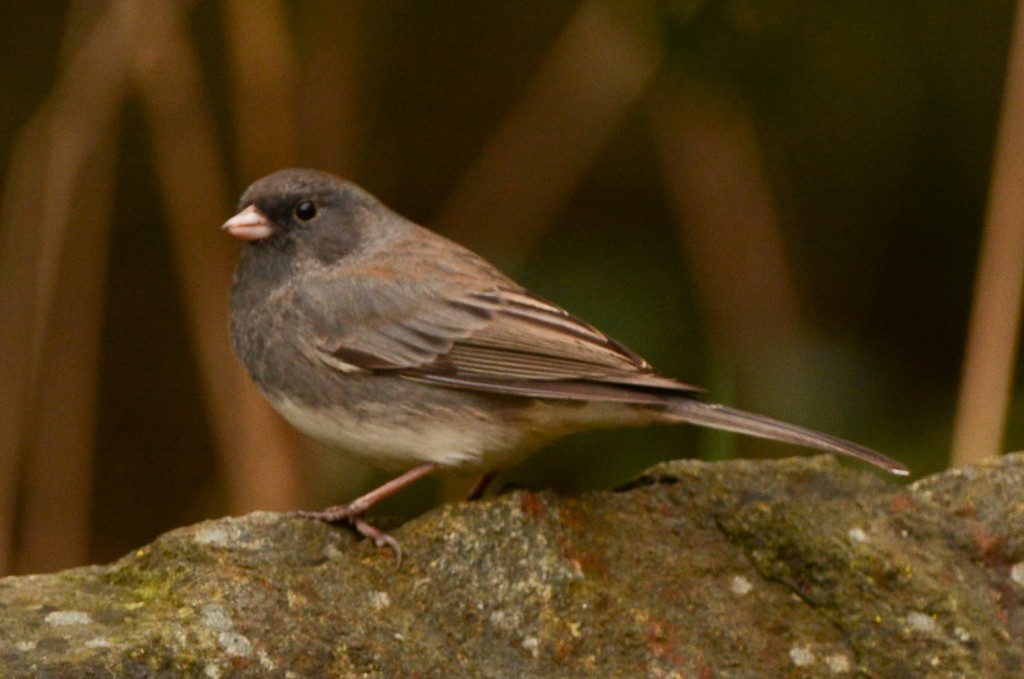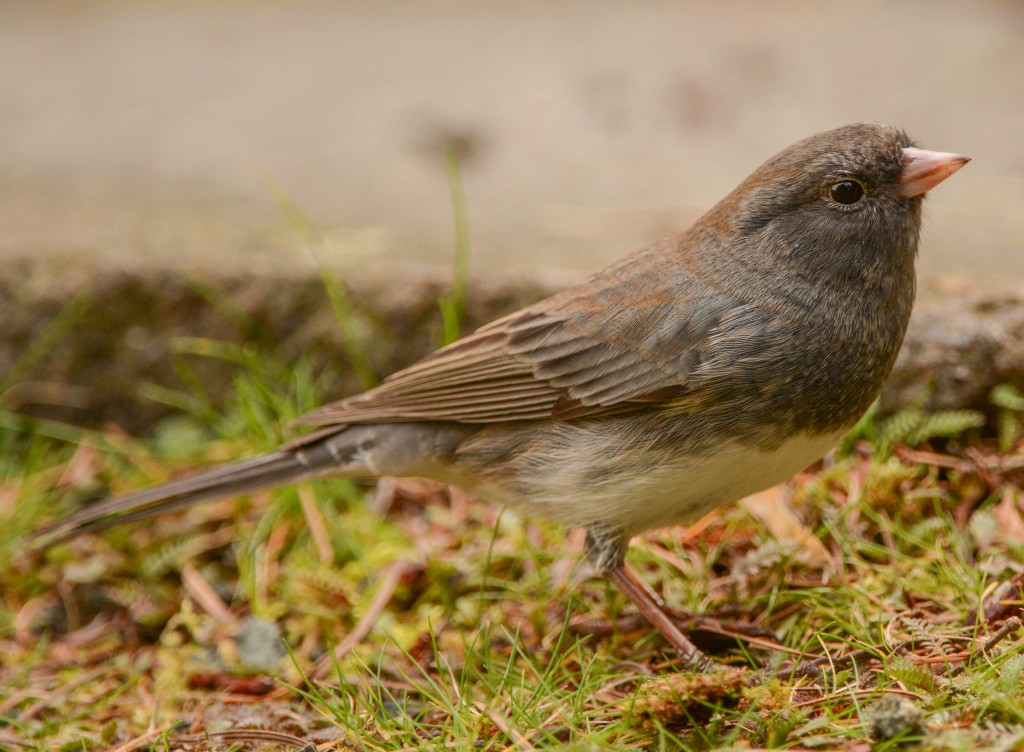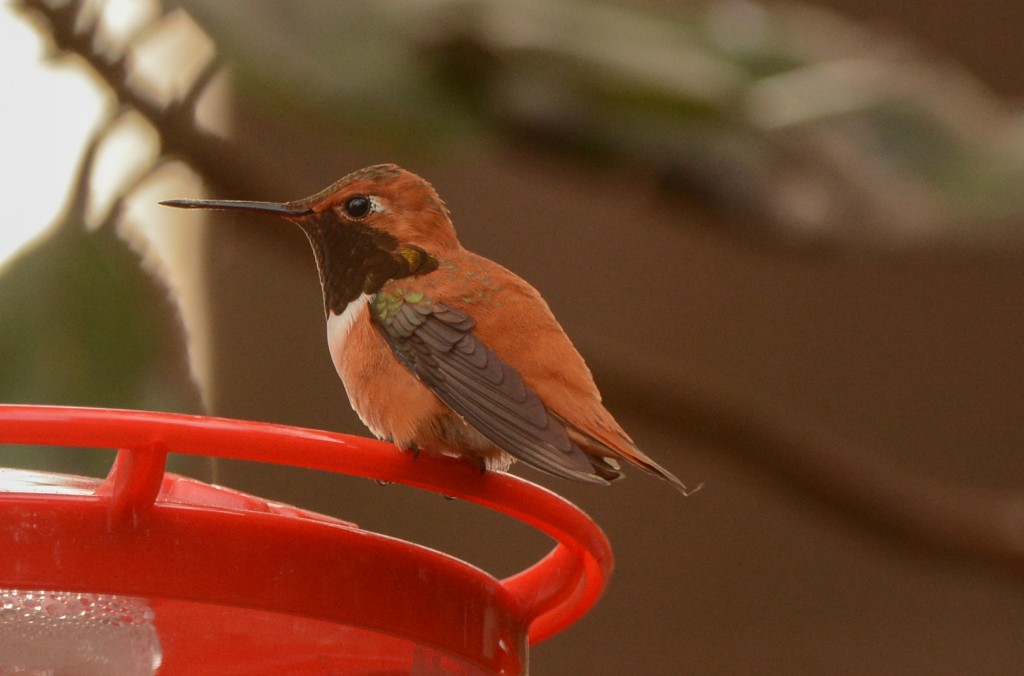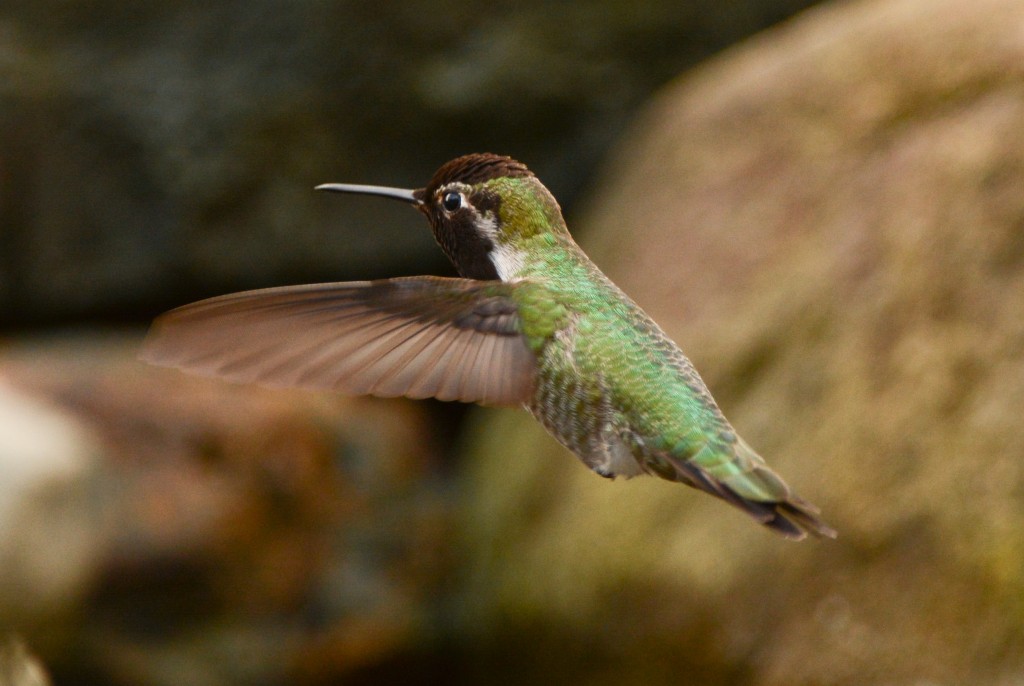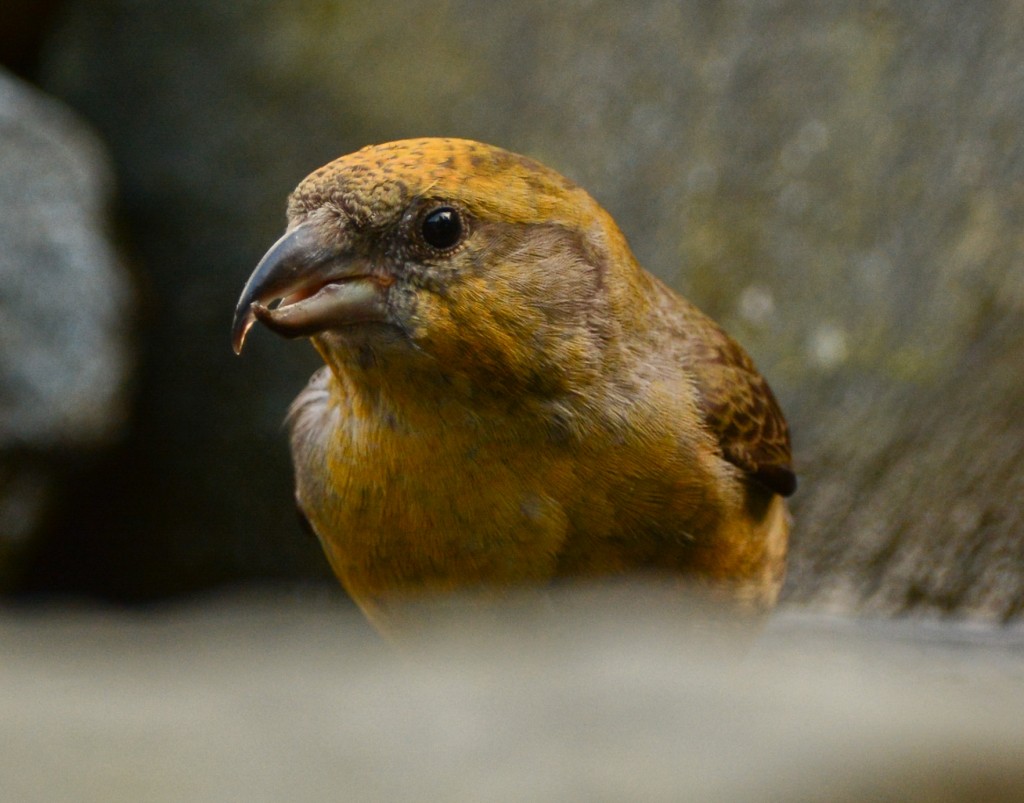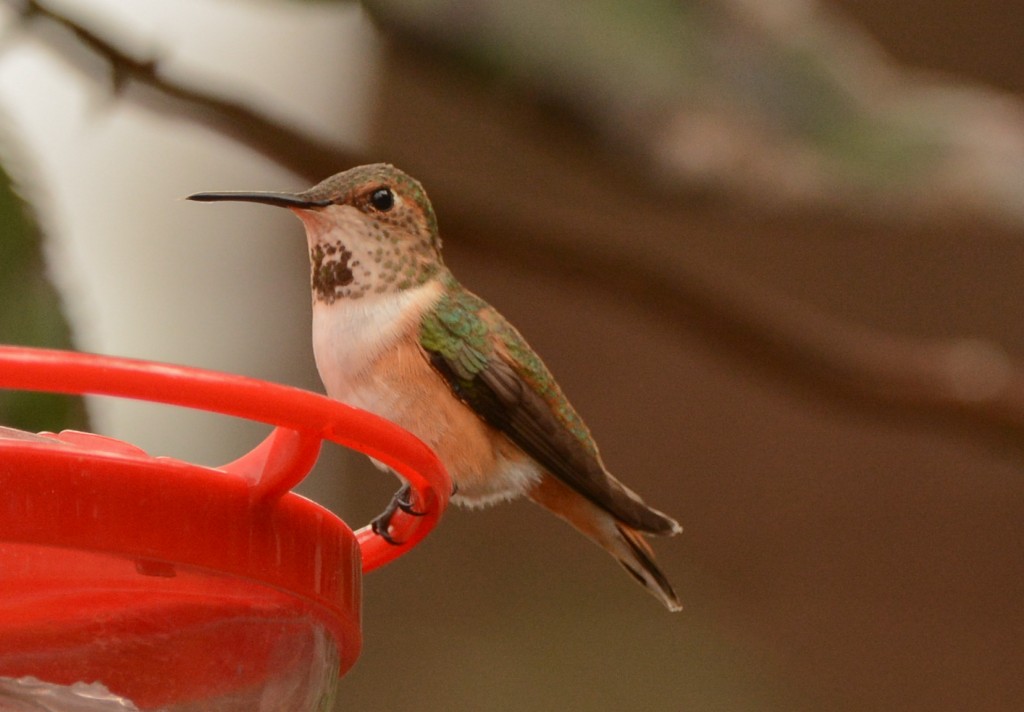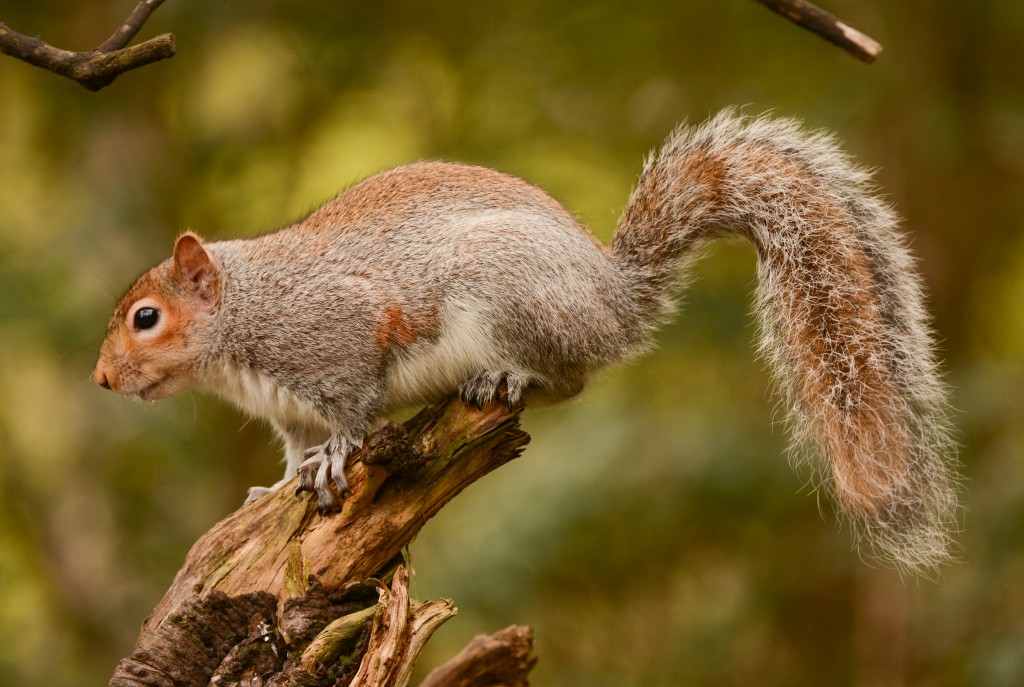Friday the 13th (of March, 2015) developed into a good day for bird watching and photographing. I spent significant time in the yard (with the aforementioned Pine siskins). As I saw I became aware of a subtle song, the issuer of which seemed to be approaching the yard. I had a difficult time picking the bird out of all the other bird activity, but finally managed to isolate a male Yellow-rumped warbler of the Audubon race… in almost full breeding plumage! This was my first warbler (in the yard) for the year! The bird traveled from a small madrone tree to the watercourse and I managed probably about 20 photographs of the bird. Yellow-rumped warblers can be found here year-round, but in the winter they are here in much smaller numbers and are not in breeding plumage. This bird approached the watercourse but never entered it, and after about five minutes in the yard left.
This same day I had several other welcome visitors. Here are a couple of Red crossbills accessing a hanging water feature, but the birds don’t seem to have a preference among hanging features, static ground features or moving water features. The bird at the back of the water feature is a Pine siskin.
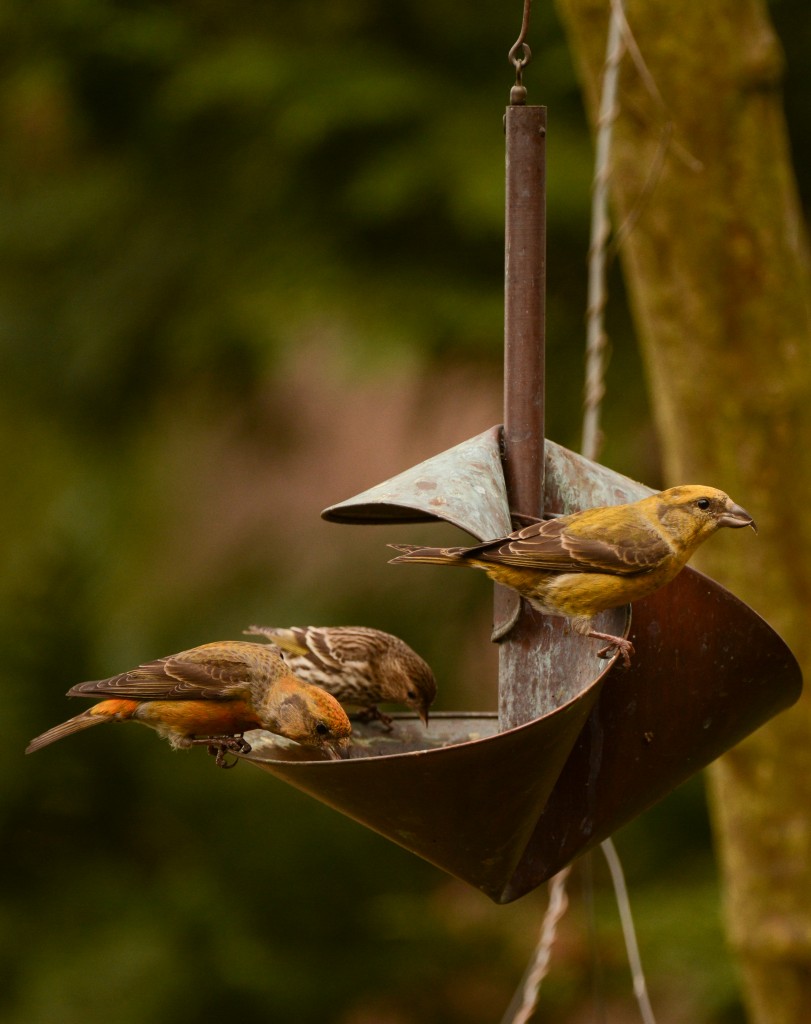
These are close-up photos of a male Red crossbill in the watercourse.
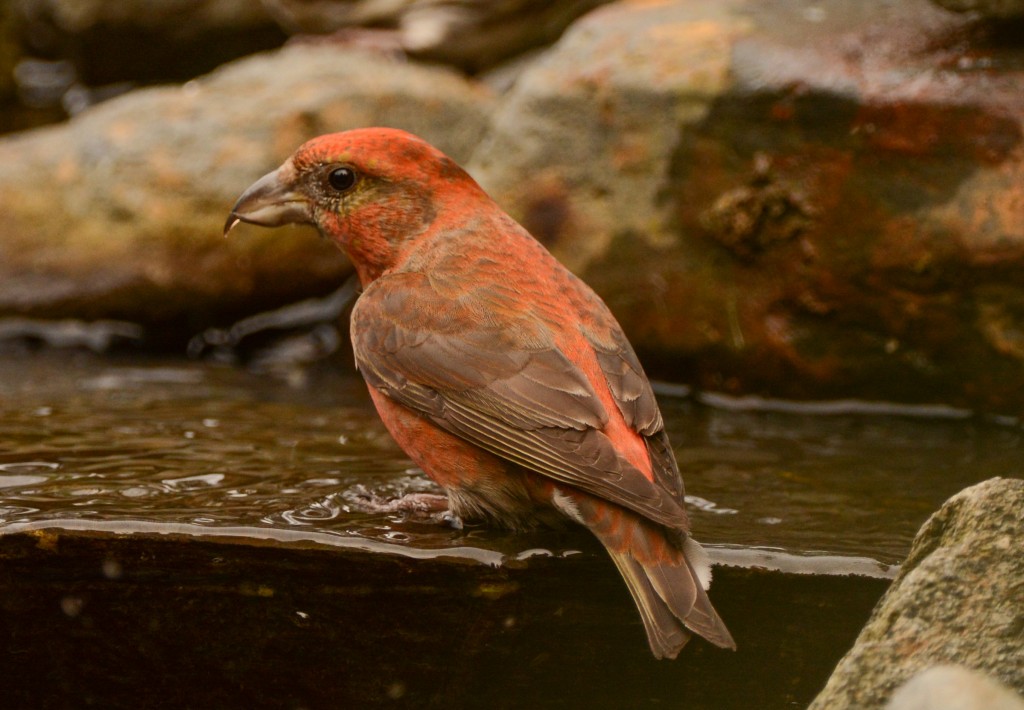
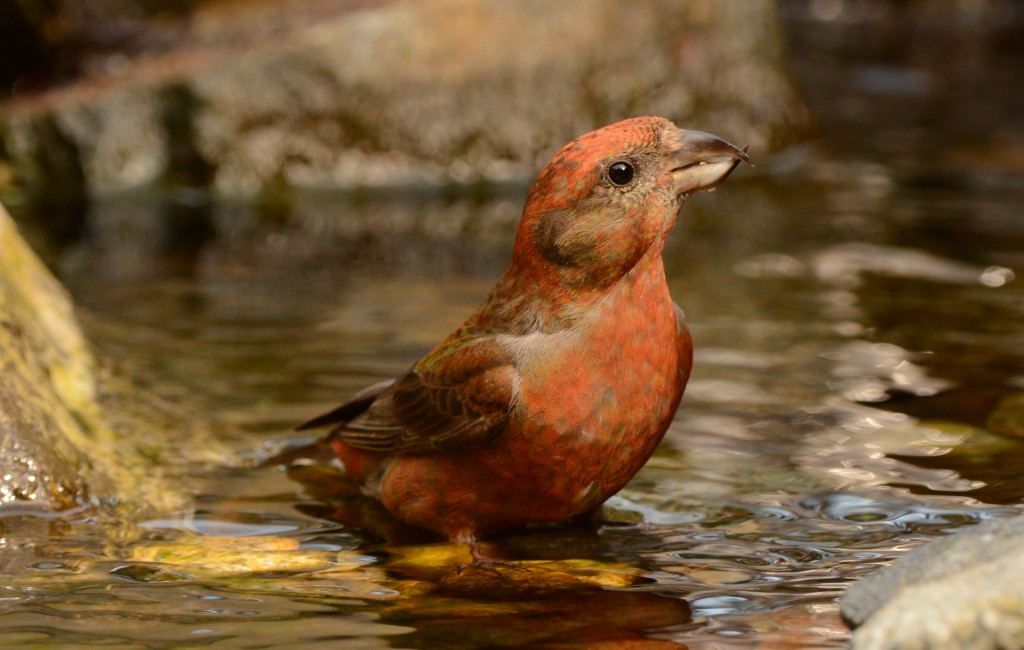 next bird is always a welcome visitor in that it gives me more opportunities to obtain photos of a bird that I find very difficult to photograph… the Brown creeper. This creeper always works its way UP a tree, only pausing its frenetic activity if it manages to find a good-sized bug wedged in the cracks in the bark. (Note the long, curved bill for performing the extractions.)
next bird is always a welcome visitor in that it gives me more opportunities to obtain photos of a bird that I find very difficult to photograph… the Brown creeper. This creeper always works its way UP a tree, only pausing its frenetic activity if it manages to find a good-sized bug wedged in the cracks in the bark. (Note the long, curved bill for performing the extractions.)
And finally, a couple of other species that are finally returning to the yard. We have a pair of Northern flickers...
and also a pair of Downy woodpeckers (this one the male).

